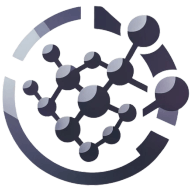How Nanotechnology is Improving Sensor Accuracy and Sensitivity: 6 Applications
Nanotechnology is revolutionizing the world of sensors, pushing the boundaries of accuracy and sensitivity to unprecedented levels. From pollution detection to disease diagnosis, nanomaterials are enhancing our ability to measure and analyze the world around us. This article explores six key applications where nanotechnology is making a significant impact on sensor technology.
- Graphene Enhances Chemical Sensors for Pollution Detection
- Quantum Dots Advance Biochemical Optical Sensing
- Carbon Nanotubes Improve Gas Detection Systems
- Nanomaterials Boost Industrial Electrochemical Sensors
- Plasmonic Nanostructures Strengthen Spectroscopic Signals
- Nanoparticle Immunosensors Enable Rapid Disease Diagnosis
Graphene Enhances Chemical Sensors for Pollution Detection
One way nanotechnology improves sensors is by using nanoscale materials like carbon nanotubes or graphene to increase sensitivity and accuracy. In one project I worked on, integrating graphene into chemical sensors allowed us to detect minute amounts of pollutants in the air—levels that traditional sensors often miss. These sensors can be used in environmental monitoring to provide real-time, precise data on air quality, which helps cities respond faster to pollution spikes. Beyond that, in healthcare, nanotech sensors enable early detection of diseases by identifying biomarkers at very low concentrations, leading to quicker and more effective treatment. What excites me is how these tiny materials dramatically enhance sensor performance, making our environment safer and improving diagnostics with minimal invasiveness. It's a promising area where nanotechnology directly impacts everyday life through smarter, more responsive sensing devices.

Quantum Dots Advance Biochemical Optical Sensing
Quantum dots are tiny particles that have greatly improved optical sensing in biochemical applications. These nanoscale structures can detect very small amounts of chemicals with high accuracy. Scientists use quantum dots to study complex biological processes that were once too difficult to observe.
This technology has opened up new ways to diagnose diseases earlier and more precisely than ever before. Researchers are constantly finding new uses for quantum dots in medical and environmental fields. To stay informed about these exciting developments, keep an eye on the latest scientific journals and news articles about quantum dot applications.
Carbon Nanotubes Improve Gas Detection Systems
Carbon nanotubes have revolutionized gas detection systems, making them extremely sensitive. These tiny tubes can detect even the smallest amounts of gases in the air. This technology is being used to create better air quality monitors and safety devices in industrial settings.
Carbon nanotube sensors can detect harmful gases much faster than traditional methods, potentially saving lives in dangerous situations. The small size of these sensors also allows for more portable and user-friendly devices. To learn more about how carbon nanotubes are improving safety, look into case studies of their use in different industries.
Nanomaterials Boost Industrial Electrochemical Sensors
Nanomaterials are making big changes in the world of electrochemical sensors for industrial monitoring. These tiny materials can detect chemicals with amazing accuracy, even in harsh industrial environments. Companies are using these advanced sensors to improve product quality and reduce waste in manufacturing processes.
The high sensitivity of nanomaterial-based sensors allows for early detection of equipment problems, preventing costly breakdowns. This technology is helping industries become more efficient and environmentally friendly. To see how nanomaterials could benefit your industry, consult with sensor technology experts or attend industry conferences showcasing these innovations.
Plasmonic Nanostructures Strengthen Spectroscopic Signals
Plasmonic nanostructures are changing the game in spectroscopic techniques by making signals much stronger. This means scientists can now detect and study very small amounts of substances that were once too difficult to see. The technology is being used in fields like medicine, environmental science, and materials research to make new discoveries.
Plasmonic nanostructures are helping researchers understand diseases better and develop more effective treatments. They're also useful for detecting pollutants in the environment at very low levels. To explore how this technology could advance your field of study or work, consider reaching out to research institutions working with plasmonic nanostructures.
Nanoparticle Immunosensors Enable Rapid Disease Diagnosis
Nanoparticle-based immunosensors are changing the way we do rapid diagnostic tests. These tiny sensors can quickly detect specific proteins or antibodies in a person's blood or other bodily fluids. This technology is making it possible to diagnose diseases faster and more accurately than ever before.
Doctors can now get test results in minutes instead of waiting for days, which means patients can start treatment sooner. These quick and accurate tests are especially helpful in emergency situations or in areas with limited access to healthcare. To learn how nanoparticle-based immunosensors could improve healthcare in your community, talk to local medical professionals or health organizations about implementing this technology.

